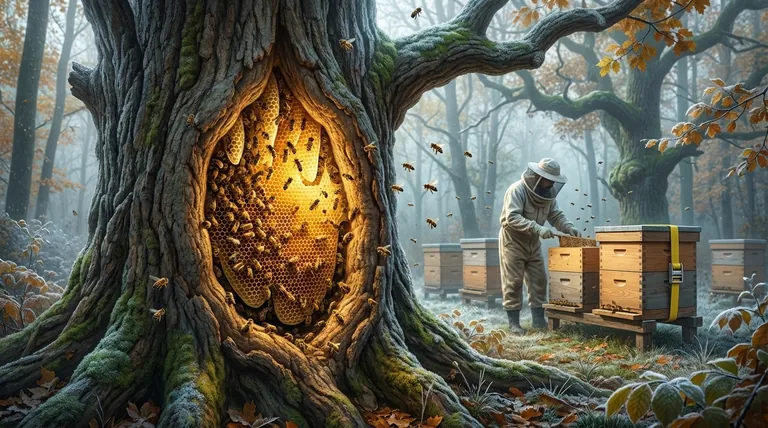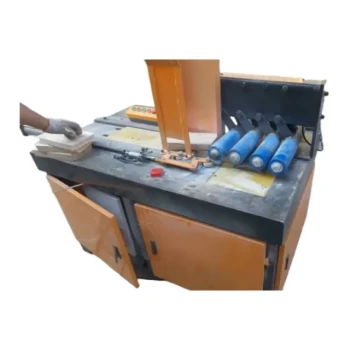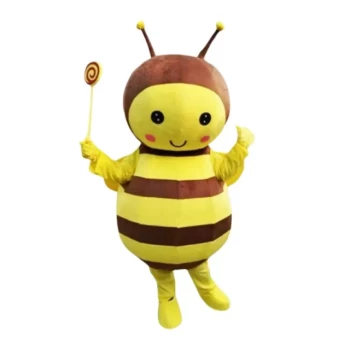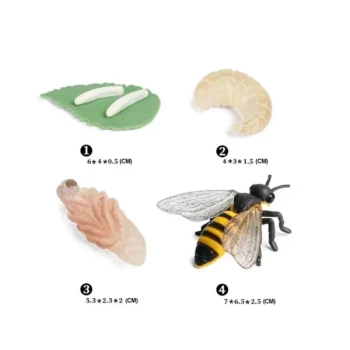When selecting a home, honey bees are driven by a single, critical need. They naturally prefer to live in well-insulated cavities, like those found in tree trunks, that provide a powerful thermal barrier against the unpredictable temperatures of the outside world.
The primary driver of a honey bee's housing choice is thermoregulation. A cavity with thick, insulating walls minimizes the energy the colony must expend to maintain the stable internal temperatures essential for year-round survival.

The Core Principle: A Stable Microclimate
Honey bees are not simply seeking shelter from rain; they are seeking a highly controlled environment. The entire colony's survival, from raising young to surviving winter, depends on maintaining a specific temperature range.
The Function of Insulation
A well-insulated cavity acts as a buffer. It slows the transfer of heat between the inside of the nest and the outside world.
This provides a crucial advantage by creating a more stable internal environment, shielding the colony from daily and seasonal temperature swings.
Why Thick Walls Matter
The references consistently point to thick walls as a key preference. Thicker walls provide superior insulation, functioning as a robust thermal barrier.
This feature is critical for conserving precious energy reserves that would otherwise be spent on heating or cooling the nest.
The Survival Advantage of a Good Home
The bees' preference for insulation is not about comfort—it is a direct strategy for survival and efficient resource management. A well-chosen home directly impacts the colony's long-term health and success.
Conserving Heat in Cold Weather
During winter, the bee cluster must generate its own heat by shivering, a process that consumes their stored honey.
A well-insulated cavity dramatically reduces heat loss, allowing the colony to conserve its food stores and increase its chances of surviving until spring.
Preventing Overheating in Summer
The same thermal barrier that keeps the nest warm in winter also helps keep it cool in summer.
By preventing the cavity from absorbing excessive external heat, the colony avoids the stress and energy cost associated with fanning and other cooling behaviors.
The Consequences of an Imperfect Home
When a swarm is forced to inhabit a poorly insulated cavity, the colony is placed under immediate and constant stress. This has significant consequences for its viability.
Increased Energy Expenditure
A colony in a thin-walled or drafty home must constantly burn through its honey reserves to fight against temperature fluctuations.
This constant energy drain leaves the colony with fewer resources for growth, brood rearing, and defense.
Higher Risk During Extreme Weather
Poorly insulated cavities offer little protection against sudden cold snaps or prolonged heat waves.
This vulnerability makes the colony more susceptible to perishing during extreme weather events, which a colony in an ideal, well-insulated home would easily survive.
Making the Right Choice for Your Goal
Understanding this fundamental preference allows us to better support honey bees, whether they are managed or wild.
- If your primary focus is beekeeping: Selecting or modifying hives to improve insulation directly contributes to colony health, reduces winter losses, and can lead to a more productive colony.
- If your primary focus is conservation: Preserving natural habitats with mature trees is essential, as these trees provide the thick-walled cavities that wild honey bee colonies need to thrive.
By recognizing the critical importance of a thermally stable home, we can more effectively support the health and resilience of these vital pollinators.
Summary Table:
| Key Preference | Why It Matters | Result for the Colony |
|---|---|---|
| Thick-Walled, Insulated Cavity | Creates a stable internal temperature (microclimate) | Conserves energy, improves survival rates |
| Thermal Barrier | Buffers against external heat and cold | Reduces stress from fanning or shivering |
| Energy Conservation | Less honey is burned for temperature regulation | More resources for growth, brood, and winter stores |
| Year-Round Stability | Protects against both summer heat and winter cold | Increases long-term colony health and resilience |
Equip Your Apiary for Success with HONESTBEE
Understanding the natural need for insulation is the first step. The next is providing your colonies with the right equipment to thrive. HONESTBEE supplies commercial apiaries and beekeeping equipment distributors with high-quality, durable supplies designed to support colony health and beekeeper productivity.
We help you create the stable environment your bees need to:
- Reduce winter losses by conserving critical energy reserves.
- Boost honey production by minimizing stress from temperature fluctuations.
- Promote stronger, more resilient colonies year-round.
Ready to enhance your operation with equipment that aligns with a honey bee's natural instincts?
Contact HONESTBEE today to discuss our wholesale-focused solutions for your commercial or distribution needs.
Visual Guide

Related Products
- Professional Galvanized Hive Strap with Secure Locking Buckle for Beekeeping
- Heavy Duty Ratchet Hive Strap
- Professional Multi-Component Bucket Wasp Trap
- Versatile Ratchet Hive Strap with S-Hooks for Secure Fastening
- Wholesales Dadant Size Wooden Bee Hives for Beekeeping
People Also Ask
- What are the two styles of hive straps? Choose the Right Strap for Your Hive Security
- What is the best length for straps used around beehives? Why 12 Feet is the Industry Standard
- What is the advantage of using cam buckle straps? Secure Your Load Fast with Simple, Safe Tensioning
- What maintenance is required for hive straps? A Guide to Cam Buckle vs. Ratchet Strap Care
- How can beekeepers secure the top cover of a hive? Protect Your Colony from Wind and Weather



















